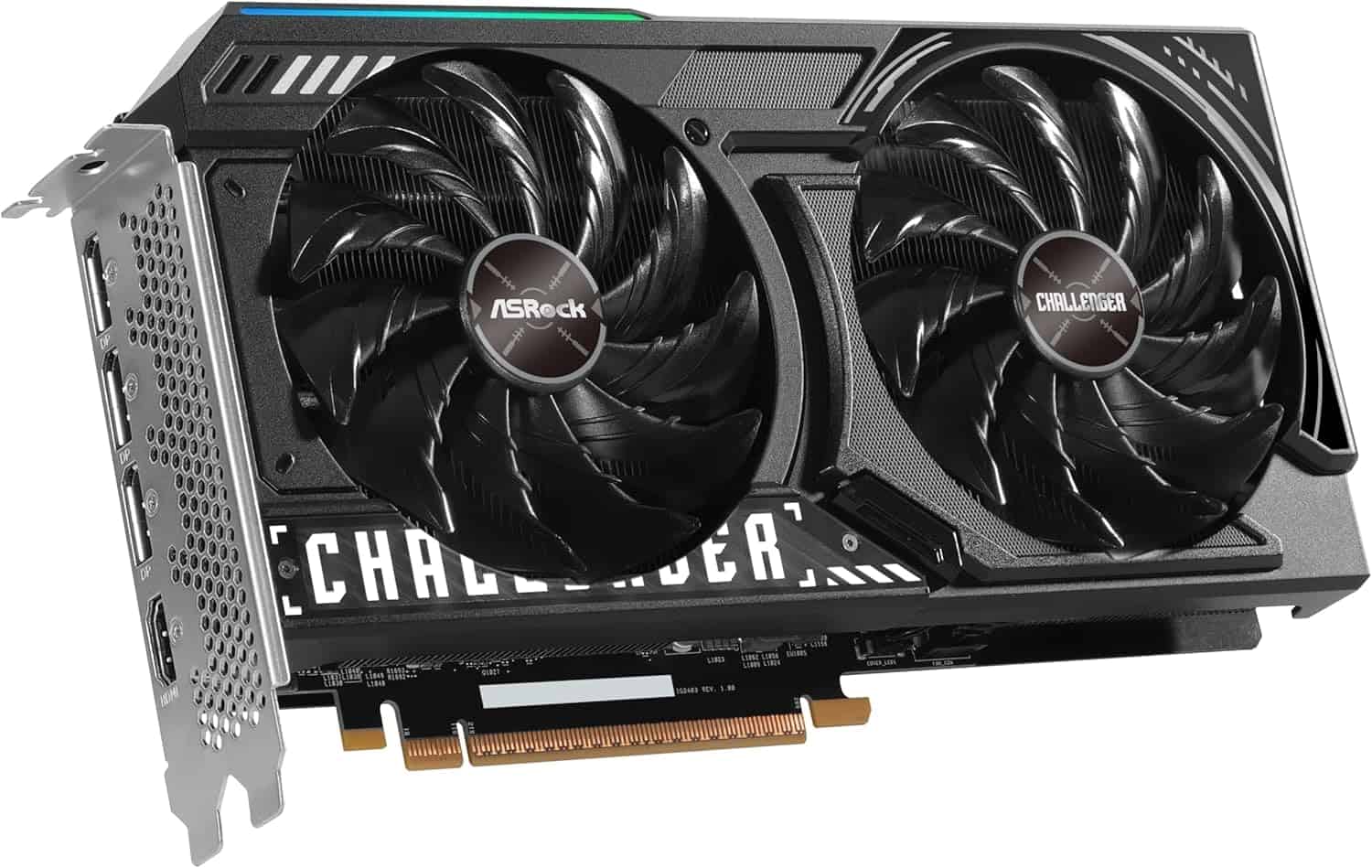Intel’s Battlemage GPUs are set to launch in December 2024, marking a significant step forward in the company’s graphics card lineup. These next-generation discrete GPUs aim to compete with NVIDIA’s RTX 4070 Super in terms of gaming performance. Intel’s top-end Battlemage GPU is rumored to offer RTX 4070 Super-level gaming capabilities, signaling a major leap in Intel’s graphics technology.
The upcoming launch represents Intel’s continued push into the high-performance GPU market. With Battlemage, Intel seeks to build on the foundation laid by its Arc Alchemist series. The company’s decision to move the launch ahead of the previously anticipated 2025 schedule suggests confidence in the product’s readiness and performance. It also looks like Intel is jumping ahead of competitors who will be waiting until 2025 to release their new products.

Intel faces stiff competition in the GPU market, with established players like NVIDIA and AMD dominating the space. The success of Battlemage is crucial for Intel’s future in discrete graphics. Industry observers note that if Battlemage performs exceptionally well, it could solidify Intel’s position as a serious contender in the GPU market.
Intel Battlemage GPUs: Get Ready for a New Generation of Graphics
Intel is about to shake up the graphics card market again. Their new Battlemage GPUs are coming soon, promising better performance and exciting new features. Here’s what you need to know.

What is Battlemage?
Battlemage is the codename for Intel’s next generation of graphics cards. It’s the successor to Alchemist, which was their first foray into discrete GPUs. Battlemage is built on a new architecture called Xe2-HPG. This architecture is designed for improved performance, efficiency, and features.
Why is Battlemage Important?
Battlemage is important because it shows Intel’s commitment to the GPU market. They are challenging the dominance of NVIDIA and AMD. This competition is good for gamers because it can lead to lower prices and more innovation.
What to Expect from Battlemage
We can expect several improvements from Battlemage GPUs:
- Better Performance: Battlemage should offer a significant performance jump over Alchemist. This means smoother gameplay and better visuals.
- Ray Tracing Enhancements: Expect improved ray tracing capabilities for more realistic lighting and reflections in games.
- AI Features: Battlemage might include new AI-powered features for upscaling and other visual enhancements.
- Improved Drivers: Intel has been working hard to improve their drivers. This should lead to a better user experience with fewer issues.

When Will Battlemage Launch?
Rumors suggest that Battlemage GPUs could launch as early as December 2024. This would put them ahead of NVIDIA and AMD’s next-gen releases.
Which Models Will Be Available?
We expect to see a range of Battlemage GPUs, from budget-friendly options to high-end models. One rumored model is the B580, which appeared on Amazon with 12GB of GDDR6 memory.
Table of Expected Features
| Feature | Description |
|---|---|
| Architecture | Xe2-HPG |
| Performance | Significant improvement over Alchemist |
| Ray Tracing | Enhanced capabilities |
| AI Features | Potential for new AI-powered features |
| Drivers | Improved stability and performance |
How to Prepare for Battlemage
If you’re thinking about upgrading your graphics card, it might be worth waiting for Battlemage. Here’s how to prepare:
- Save Up: Start saving for your new GPU. Prices will vary depending on the model.
- Check Your System: Make sure your PC meets the minimum requirements for Battlemage. This includes a compatible motherboard and power supply.
- Stay Informed: Keep an eye out for news and reviews of Battlemage GPUs. This will help you choose the right model for your needs.
Key Takeaways
- Intel plans to launch Battlemage GPUs in December 2024
- The top-end Battlemage GPU aims to match RTX 4070 Super performance
- Battlemage’s success is critical for Intel’s future in the discrete GPU market
Battlemage GPU Overview and Specifications
Intel’s upcoming Battlemage GPUs promise significant performance improvements and new features. These graphics cards aim to compete with offerings from Nvidia and AMD in various market segments.
Architecture and Performance
Battlemage GPUs will use Intel’s new Xe2 architecture. The top-end model, possibly called BMG-G21, is rumored to feature 20 Xe2 cores, equivalent to 160 compute units. This GPU may run at a 2.85 GHz clock speed and come with 12 GB of VRAM.
Another variant, potentially named BMG-31, could include 24 Xe2 cores and a 192-bit memory bus. The highest-tier Battlemage GPU might even reach 32 Xe2 cores, targeting high-performance gaming and content creation.
Intel is expected to use TSMC’s advanced manufacturing process for these chips, likely improving power efficiency and performance compared to the previous Arc Alchemist series.
Battlemage Variants and Target Segments
Intel plans to release multiple Battlemage GPU models to cover different market segments:
- High-end: BMG-G21 or BMG-31 (targeting RTX 4070 Super performance)
- Mid-range: Arc BMG-20
- Budget: Arc BMG-G10
These GPUs will cater to gamers, content creators, and professionals seeking powerful discrete graphics solutions. The variety of options should allow Intel to compete in mainstream and budget segments as well.
Competitive Landscape
Battlemage GPUs are set to face stiff competition from Nvidia’s and AMD’s offerings. Intel aims to match or exceed the performance of cards like the RTX 4070 Super with its top models.
Key competitors:
- Nvidia: GeForce RTX 40 series, potential Blackwell GPUs
- AMD: Current RDNA 3 GPUs, upcoming RDNA 4 architecture
Intel’s pricing strategy and driver support will be crucial factors in gaining market share. The company’s integrated graphics solutions, like the Core Ultra 200V, may also benefit from Battlemage architecture improvements.
Production and Market Introduction
Intel’s Battlemage GPUs are set for imminent launch, with production ramping up and market strategies taking shape. The company aims to solidify its position in the graphics card market with improved performance and competitive pricing.
Manufacturing Partners and Production Strategy
Intel has partnered with TSMC for the production of Battlemage GPUs. This collaboration leverages TSMC’s advanced manufacturing processes to enhance performance and efficiency. The production strategy focuses on both SOCs and discrete GPUs, targeting a range of market segments.
Intel plans to introduce entry-level cards alongside more powerful desktop graphics cards. This diverse lineup aims to cater to various consumer needs and budgets. The company has increased production capacity to meet anticipated demand.
Pat Gelsinger, Intel’s CEO, has emphasized the importance of GPU production in the company’s overall strategy. This commitment is reflected in the resources allocated to Battlemage development and manufacturing.
Availability and Pricing
Battlemage GPUs are expected to hit shelves in December 2024. This timing aligns with the holiday season, potentially boosting initial sales. Intel aims to capitalize on holiday and end of year deals to promote its new lineup.
Pricing is expected to be competitive, following the strategy used with the Alchemist series. Intel may offer aggressive pricing to gain market share from NVIDIA and AMD. Entry-level cards could start at under $200, while high-end models may range from $500 to $800.
Availability is planned to be widespread, with Intel partnering with major retailers and system integrators. Pre-orders might open shortly after the official announcement.
Driver Support and Ecosystem Integration
Intel has been working on improving its driver support, a crucial aspect for the success of Battlemage. The company has hired more software engineers to enhance driver stability and performance.
Tom Petersen, Intel’s graphics marketing lead, has stressed the importance of day-one driver support for new game releases. This focus aims to address previous criticisms of Intel’s GPU drivers.
Ecosystem integration efforts include partnerships with game developers and content creation software companies. These collaborations aim to optimize Battlemage’s performance in popular applications and games.
Intel is also developing AI-enhanced features for its GPUs, potentially offering unique capabilities in content creation and gaming. These features could set Battlemage apart in the competitive GPU market.







